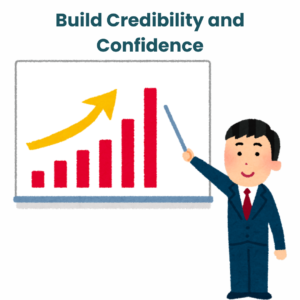In today’s dynamic business landscape, the ability to influence and sell effectively is extremely critical for achieving success in any field.
Whether you’re pitching an idea to a colleague, negotiating a deal with a client, or persuading clients to buy your product or any service offering, mastering the art of influencing and selling can significantly enhance your success rate and drive better results.
This is one of the most sought-after subjects for conducting Corporate trainings & Soft Skill trainings for small & large corporates alike.
In this article, we’ll explore some of the most common & practical tips and strategies to help you hone your influencing and selling skills, along with real-life examples to illustrate key concepts.
1. Understand Your Audience:
To influence and sell effectively, it is very important to understand your audience’s needs, preferences, and pain points. Whether you’re addressing individuals or groups, a successful salesperson always customizes & tailors his pitch to align with the specific challenges of each prospect, showcasing a deep understanding of their unique situation.
Take, for example, Steve Jobs’ unveiling of the iPhone. He understood that consumers desired a seamless integration of technology and design, leading to the creation of a revolutionary and iconic product called “Apple phones” that catered to their desires.
2. Build Trust and Credibility:
Trust is the foundation of successful influencing and selling. Establishing credibility and rapport with your audience is key to gaining their confidence and receptivity to your message. Share relevant expertise, demonstrate authenticity, and prioritize integrity in your interactions. A classic example of building trust is the story of Zappos, whose legendary customer service and transparent approach to business earned them loyal customers and repeat business.
3. Tell Compelling Stories:
Stories have the power to captivate hearts and minds, making them a potent tool for influencing and selling. Design & craft compelling narratives that resonate with your audience’s emotions and aspirations. Whether you’re pitching a product or a service, conveying a vision, or supporting for change, storytelling can make your message more memorable and persuasive.
For instance, Nike’s “Just Do It” campaign. By telling stories of athletes overcoming obstacles and achieving greatness, Nike inspired consumers to believe in themselves and their potential.
4. Listen Actively:
Effective influencing and selling involves active listening and genuine engagement with your audience. Take the time to understand their concerns, objections, and feedback, and respond thoughtfully to address their needs. By listening attentively and empathetically, you can build rapport, uncover valuable insights, and tailor your approach accordingly.
Jeff Bezos, the Founder & CEO of Amazon, has been known for his commitment to customer service. By actively listening to customer feedback and addressing their concerns, Amazon built a loyal customer base and achieved expansive & sustainable growth.
5. Showcase Value:
In influencing and selling, it is essential to clearly articulate the value proposition of your offering and demonstrate how it addresses your audience’s needs or desires. Focus on highlighting the benefits and outcomes that your product or service can deliver, rather than just its features.
For instance, Amazon founder Jeff Bezos exemplifies this principle by prioritizing customer value above all else. By focusing on delivering exceptional value and customer experience, Amazon has become a global leader in e-commerce.
6. Overcome Objections:
Resistance and objections are natural parts of the influencing and selling process. Instead of viewing objections as barriers, see them as opportunities to clarify misunderstandings and address those concerns. Anticipate common objections and prepare persuasive responses backed by evidence or testimonials. By addressing objections effectively, you can build credibility and confidence in your offering.
For Example, Salesforce founder Marc Benioff encountered numerous objections when introducing cloud-based CRM software. However, by addressing concerns and highlighting the benefits of the solution, he successfully overcame objections and revolutionized the CRM industry.
7. Regular Follow Ups:
The follow-ups are crucial in influencing and selling. After presenting your proposal or making a sales pitch, follow up promptly and consistently to reinforce your message and address any remaining questions or concerns. Showcase reliability and commitment by delivering on your promises and commitments. A prime example of effective follow-up is the approach taken by top-performing sales teams, who maintain regular communication with prospects and clients to nurture relationships and drive conversions.
In conclusion, mastering the art of influencing and selling requires a combination of empathy, communication skills, and strategic thinking. By applying these practical tips and strategies, you can elevate your professional impact and achieve greater success in your careers. In the corporate scenario, to develop these skills & capabilities it becomes almost imperative & necessary to run corporate trainings and soft skill trainings to empower the employees to excel in their roles and drive business growth.





Leave a Reply